A Journey into Creative Expression

What is consciousness?
“Consciousness” is a term used to describe the state of awareness or subjective experience of an individual. It is the ability to perceive, think, and have self-awareness. While consciousness is a complex phenomenon that is still not fully understood, it is generally associated with the functioning of the brain and the emergence of subjective experiences.
Idea Exploration
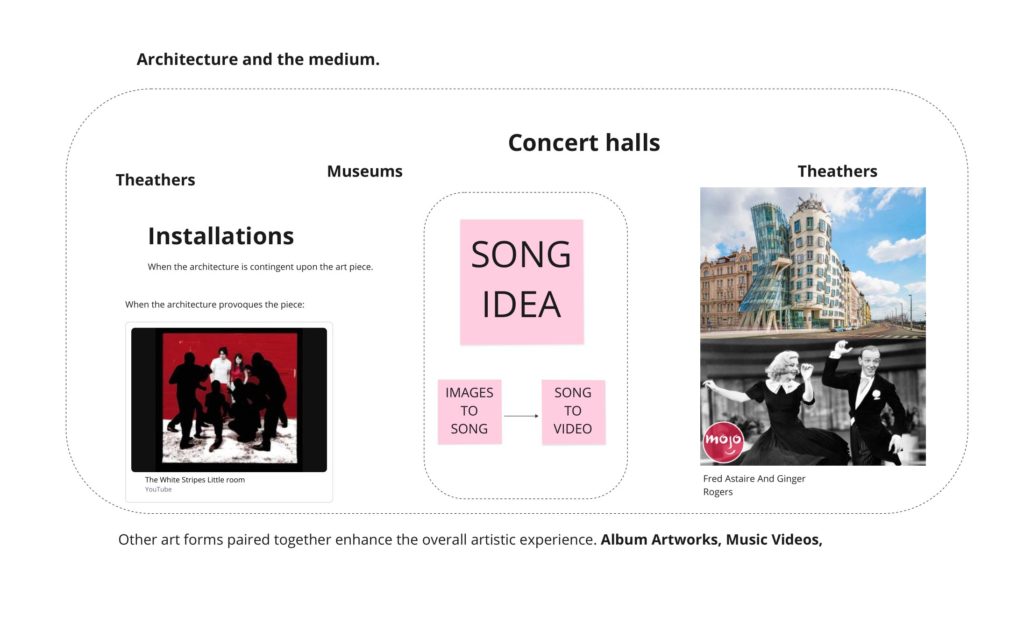
“Little Room” by The White Stripes
- Minimalist Design: The simplicity and stripped-down nature of “Little Room” can inspire the design of a small-scale architectural project that focuses on minimalism. Embrace clean lines, a limited color palette, and efficient use of space to create a sense of tranquility and simplicity.
- Compact Living Spaces: The lyrics of the song speak to the constraints of a small room. This can be translated into the design of compact living spaces, such as micro-apartments or tiny houses. Explore innovative solutions for multifunctional furniture, clever storage solutions, and efficient layouts to optimize small areas.
- Intimate Retreat: “Little Room” also conveys a sense of privacy and seclusion. This could inspire the creation of intimate spaces within a larger architectural context, such as cozy reading nooks, hidden gardens, or secluded courtyards. Use architectural elements like screens, partitions, and vegetation to create private retreats within a larger framework.
Images from text
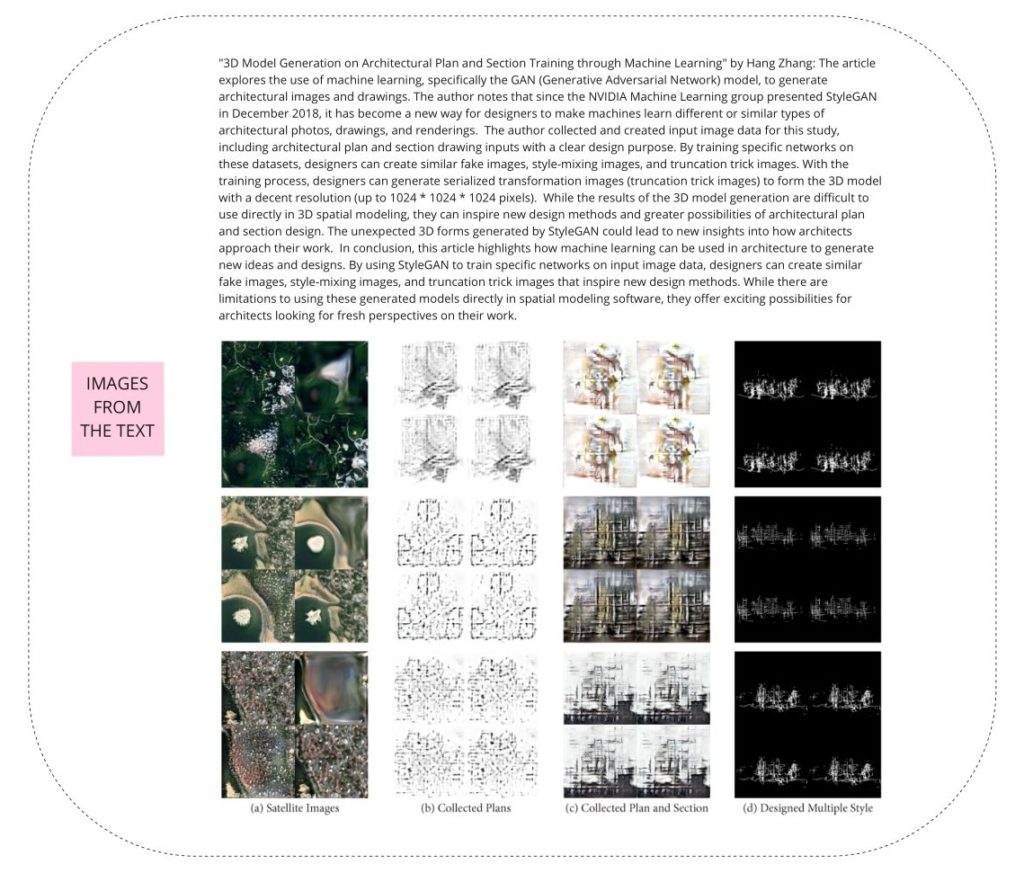
Youtube Recommendations

- Data Collection: YouTube collects vast amounts of data, including user interactions, video metadata, and contextual information, such as device type and location.
- User History Analysis: The algorithm considers the user’s watch history, likes, dislikes, and other interactions to understand their preferences and interests.
- Content Analysis: YouTube analyzes video metadata, including title, description, and tags, as well as the content of the videos themselves. This analysis involves using machine learning techniques to extract relevant features and understand the video’s topic, style, and characteristics.
- Similarity and Relevance: The algorithm identifies videos that are similar or related to the user’s previous interactions and preferences. This involves comparing video features and considering factors such as topic, genre, language, and viewer engagement.
- Popularity and Trending: YouTube takes into account the popularity of videos among a wider audience. This includes considering metrics like view count, likes, comments, and how rapidly a video is gaining traction.
- Personalization and Diversity: The algorithm aims to balance personalized recommendations based on user preferences with introducing new and diverse content. It seeks to avoid creating a “filter bubble” by exposing users to different perspectives and genres.
- Recommendations Refinement: YouTube continually learns and refines its recommendations based on user feedback and interactions. It employs reinforcement learning and feedback loops to optimize the recommendation process over time.
Sample Process
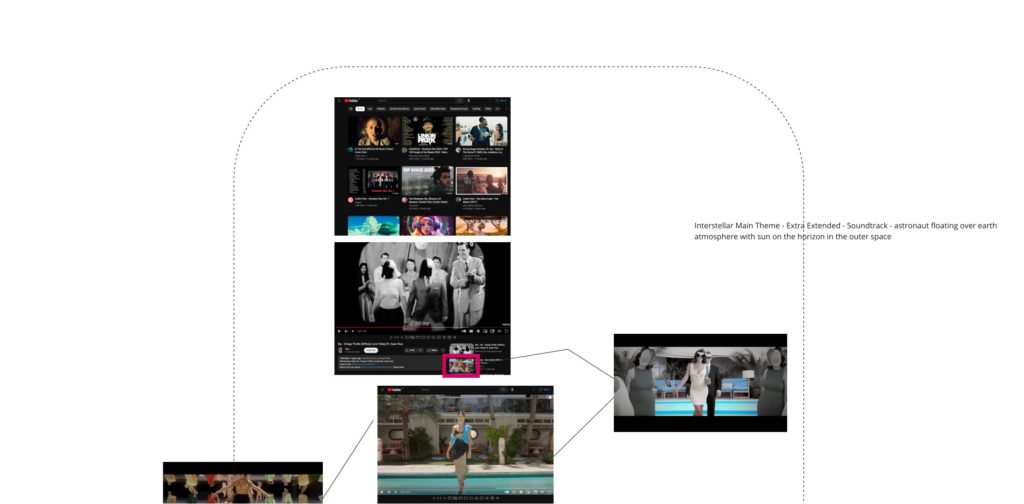
- Open youtube in incognito mode. To avoid personal preferences.
- To understand youtube functionality we picked one artist in this context ‘Sia’ and followed the recommendations from youtube.
- Then we picked the first and the last frames of the first recommended video and the second recommended and visualized in ‘Stable Diffusion’, which would create more frames between them to create a new AI video. This same concept applied to the audio as well which merged in ‘Aviva’.

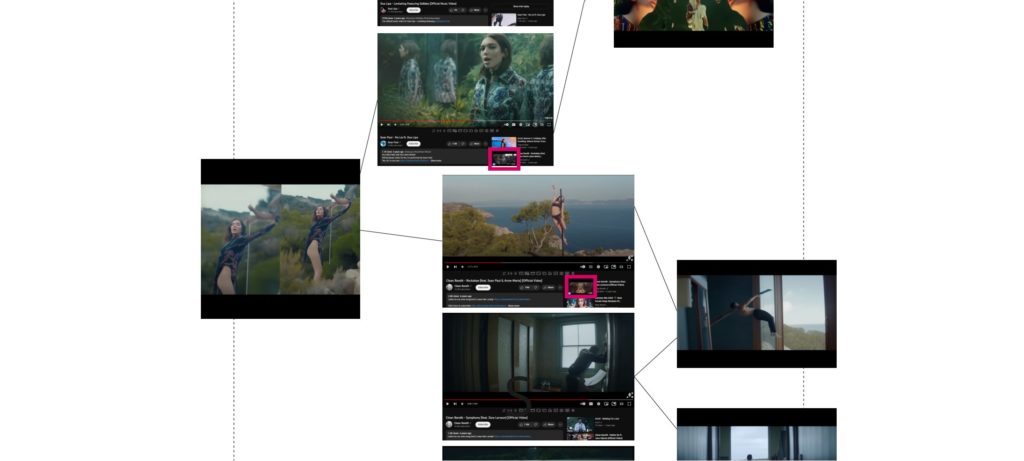
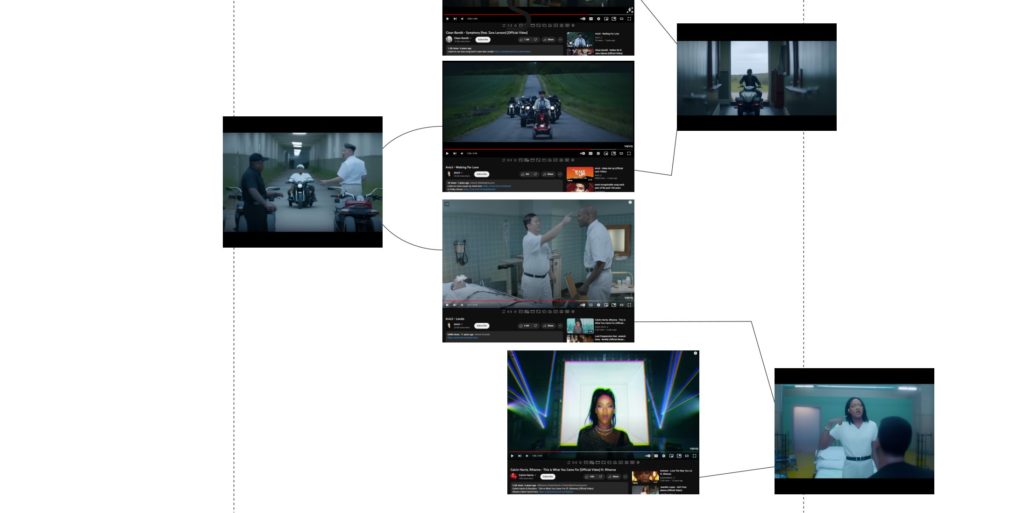
AI Tools

Interstellar – The Movie
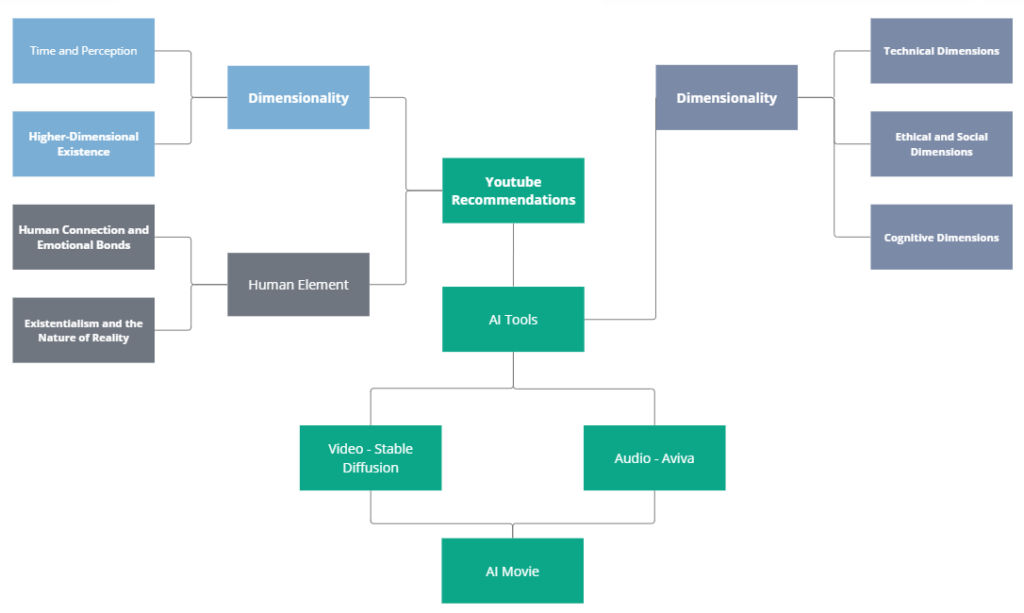
Interstellar – Relation to consciousness
- Time and Perception: The film explores the relationship between time and consciousness. As the astronauts venture into space and encounter extreme time dilation near the black hole, they experience the subjective effects of time passing differently. This exploration raises questions about the perception of time and how it shapes our consciousness.
- Higher-Dimensional Existence: The character Dr. Amelia Brand suggests the possibility of a higher-dimensional consciousness that transcends the physical limitations of space and time. This concept hints at the idea that consciousness might extend beyond our three-dimensional existence and opens up philosophical and metaphysical discussions about the nature of consciousness.
- Human Connection and Emotional Bonds: Love and emotional connections play a significant role in the film. The characters’ relationships and the power of love are portrayed as fundamental forces that can transcend space, time, and physical boundaries. This exploration of the emotional aspects of consciousness highlights the role of subjective experience and interpersonal connections in shaping our consciousness.
- Existentialism and the Nature of Reality: “Interstellar” raises existential questions about the nature of reality and our place within the universe. It prompts viewers to contemplate the vastness of space, our cosmic insignificance, and the potential meaning and purpose behind human existence. These existential inquiries often intertwine with discussions on consciousness and our perception of reality.
AI Dimensionality
- Technical Dimensions: The technical dimension of AI refers to the underlying technologies, algorithms, and methodologies used to build and develop AI systems. This includes machine learning, deep learning, natural language processing, computer vision, robotics, and other related fields. The technical dimension focuses on the tools and techniques used to create intelligent systems.
- Ethical and Social Dimensions: The ethical and social dimensions of AI pertain to the broader societal impact and implications of AI technology. This includes considerations such as privacy, bias, transparency, accountability, and the potential impact on employment and the economy. Ethical dimensions involve questions about the responsible development and use of AI, ensuring fairness and equity, and addressing potential risks and unintended consequences.
- Cognitive Dimensions: The cognitive dimension of AI explores the capabilities and functionalities that mimic or replicate human cognitive processes. This includes areas such as perception, reasoning, learning, problem-solving, and decision-making. Cognitive dimensions of AI focus on building systems that can understand, interpret, and interact with the world in ways that resemble human intelligence.
Interstellar Frames

Conclusions
- The algorithm of connections and recommendations in networking is a new way of social interaction that is increasingly embedded in our daily lives. Unconsciously, the algorithm creates focal points of attention, new superficial relationships, and sometimes even new business opportunities.
- AI tools are currently fragmented and limited, but gradually they are becoming easier to combine into innovative creations that we are not accustomed to imagine.
- Certain levels of abstraction, such as in music or architecture, are still difficult to grasp by machine learning methods, including most human features like singing.

